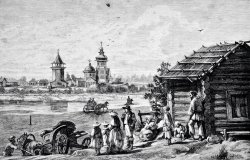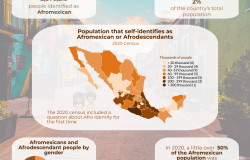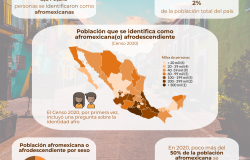244. The Social Roots of Ethnic Conflict in East Central Europe: A Comparative Study of the German Diaspora in Hungary, Romania and Slovakia
In the twentieth century, one of the most explosive issues of European history was the ethnic-national question in East Central Europe. From the assassination of Archduke Ferdinand and the struggle of minorities for nationhood leading up to World War I, to the rise of National Socialism and the horrors of the Holocaust, to the recent bloodshed in the former Yugoslavia, the ethnic-national question in East Central Europe significantly altered the course of European as well as world civilization. Arguably the most controversial ethnic-minorities of East Central Europe were the Germans. Sometimes referred to as the 'fifth column' or as 'Himmler's auxiliaries' in popular and academic minds, the German Diaspora in Eastern Europe is often viewed as having been Hitler's willing accomplices in his eastward expansion.
In 1935, the Germans represented one of the largest European ethnic diasporas with approximately 95 million German speakers in the world. 65 million lived in Germany and 6.5 million in Austria. The remaining 23.5 million were scattered across the globe, with the largest concentration in Eastern Europe. A total of 10 million Germans lived in Eastern Europe in 1935, with 3 million in Czechoslovakia, 1 million in Poland, 750,00 in Romania and 500,000 in Hungary. After the peace treaties of World War I and the breakup of empires in Central Europe, the Germans became the largest ethnic minority in many of the new states, including Hungary, Czechoslovakia, Estonia and Latvia.
Another unique facet of the German diaspora is that prior to World War I, pan- Germanism had not taken serious root within the many German ethno-linguistic communities. Yet by 1938, in twenty quick years, the majority had become German nationalists if not outright Nazis. It is the single most impressive harvesting of outside nationals by a state in history and, arguably, an example of how policy makers working with academics can transform ethnic- national identity formation, which should be studied in all textbooks.
The central paradigm addressed here deals with the historical factors that explain the Hungarian-German diaspora's divergent reactions to the division of the Hungarian Kingdom after World War I, analyzing the group's susceptibility to National Socialism in the interwar period. In 1919, the former Hungarian Kingdom was divided along three broad lines: the northern part (Slovakia) became part of the Czechoslovak Republic; the eastern territory (Transylvania) became part of the Romanian Monarchy; while the western and central plains, formed the core of Hungary. A large contingent of the Germans that lived in Slovakia expressed opposition to the Treaty of Trianon, which divided the Hungarian Kingdom. Known as the Zipsers, they either moved to the now reduced territory of Hungary or remained in Slovakia, calling for reintegration with Hungary. In strong contrast to the Zipsers, the Germans in Transylvania (who referred to themselves as the Siebenburgen Saxons) celebrated the division of the Hungarian Kingdom and their incorporation into the Romanian Monarchy. A third and entirely different approach characterized the majority of the German speakers that lived in what became part of Hungary. Known as the Schwabs, after the Nazis seized power, they became staunch supporters of integration with the German Reich. Each of the three largest German-speaking groups of the Hungarian Kingdom reacted to the post World War I political landscape in their own particular way: the Zipsers of Slovakia wanted back in, the Transylvanian Saxons were celebrating their exit, while the Schwabs in Hungary wanted out.
The present state of scholarship on the German diaspora is strongest in its analysis of the variations in the political-ethnic strategies of German minority leaders and the political leaders of the Third Reich. Representative works in the field include G. C. Paikert's The Danube Swabians (1967), Komjathy and Stockwells' German Minorities and the Third Reich (1980), Valdis Lumans' Himmler's Auxiliaries (1993), Thomas Spira's German-Hungarian Relations and the Schwabian Problem 1919-1936 (1977), and Lorant Tilkovszky's Ungarn und die deutsche "Volksgruppenpolitik" 1939-1945 (1981). Each of these works is sensitive to the variations in the German diaspora's reaction to the rise and spread of National Socialism. However, by utilizing primarily political pamphlets and the correspondences of leading party figures, none of the works mentioned fully explore the subtleties and significance of the social bases of these different ethnic-group formations.
It is especially important to note the divergent social bases of each of the three main German ethnic groups. The Schwabs, for instance, had overwhelmingly rural, Catholic backgrounds, and were primarily employed in agriculture or handicraft production, or in low- level state positions, such as police officers or county and municipal clerks. The rural Schwabians had inadequate knowledge of Hungarian and tended not to assimilate into Hungarian society. The Zipsers emerged as the polar opposites of the Schwabs. Not only were they Lutherans, but they also tended to live in cities and were likely to be university-educated and employed as teachers, professors, and scientists. The Transylvanian Saxons represent yet another variation. In contrast to the Schwabs and Ungarndeutsche, the Transylvanian Saxons present a more complex social formation, with a strong urban bourgeois as well as a rural agricultural base. Interestingly, complementing these intra-ethnic, socio-economic differences, the three major German-speaking groups also developed different notions of nationhood and national identity. The Zipsers promoted the idea of assimilation into Hungarian culture, the Donauschwabe supported the spread and domination of pan-Germanism, while the Siebenburgen Saxons advocated the creation of a multi-ethnic and linguistic Romanian Kingdom. The Zipsers' ideal was the French State model (one-language/one-state); the Schwabs' was Nazi Germany (one-race/one-state); while the Siebenburgen Saxons favored the Swiss Confederation (multi-linguistic/one-state).
In spite of the differences within the three main German-speaking groups of the former Hungarian Kingdom, from 1938 to 1941 each group had come under the control (direct and indirect) of the Nazi party in Berlin. One of the more surprising aspects of this development was the complex role played by religious institutions. For example, the Lutheran Church in Transylvania played a markedly different role than that in Slovakia. In Transylvania, the evolution of the political life of the Saxon Lutheran Church was strongly impacted by the land reforms introduced in Romania during the 1920s, influencing primarily the land held by the Church - the single largest landlord in the Saxon community. Following the land reforms, the ability of the Church to finance its schools, hospitals and orphanages was greatly reduced, and a financial crisis gripped the entire German community. Consequently, within the Church leadership, increasingly radical opponents of the Romanian government emerged and agitated for greater cooperation with Germany. The radicalization of the Church leadership was slow. The general trend was for a moderate conservative leadership, critical of the Romanian government, and which would continually strive to reach a mutually beneficial solution. However, from the 1930s, increasingly radical elements were elected to the Church leadership, and by the 1940s the Transylvanian Saxons' National Socialist party was in control of decision-making. The victory of the Nazis was complete with Wilhelm Staedel's election to the Bishopric on February 16, 1941. Bishop Staedel's two controversial actions were: a) handing over all the church schools to the local Nazi party; and b) setting up an anti-Semitic institute in Sibiu (Saxonland's capital), aiming to initiate research on the influence that Jews played on the Old Testament. Staedel's grand goal was to establish the German Christian Church in Sibiu and rewrite the Old Testament along Aryan lines. When the church schools were transferred to the local Nazi party administration, the party intensified its recruitment of young Saxons into both the local National Socialist party and the military wing of the SS. To be sure, there were leaders within the Church strongly opposing the Nazi takeover of the Transylvanian Saxon community, the most vocal being Muller, the Lutheran Minister of Sibiu. Yet, Muller often found himself isolated in the debates, with Bishop Staedel exerting considerable control over him.
While the Lutheran Church among the Transylvanian Saxons embraced the pan- German ideology of National Socialism, in Slovakia, the Lutheran Church acted in starkly different ways. In the town of Kosice (Slovakia), during the nineteenth century, the Lutheran Church had become a melting pot of Slovaks, Magyars, and Germans, with mass held in Hungarian. Although the Lutheran Church was officially referred to as the "German Church" (unlike in Transylvania where religion also reaffirmed ethnic lines), in Kosice, the Lutheran Church played the role of assimilating Germans into the Hungarian society. Interestingly, as the town of Kosice was transferred to Czechoslovakian administration after World War I, the Lutheran Church there played the unusual role of being dominated by a German congregation, while at the same time agitating for reintegration with Hungary. This study, however, indicates the need for further research before any generalization can be made on the role of the Lutheran Church. As an example, in the town of Sibiu (Romania), the town Lutheran Minister Muller openly contested the Nazi party takeover of the Bishopric. By contrast, in Slovakia in the town of Levoca, the Lutheran minister openly sympathized with the Nazis and worked to remove from office all Lutheran ministers in Eastern Slovakia who did not openly support the Nazi party.
Balazs Szelenyi spoke at an EES Discussion on November 7, 2001. The above is a summary of his presentation. Meeting Report #244.
About the Author
Balazs Szelenyi
Read More
Global Europe Program
The Global Europe Program is focused on Europe’s capabilities, and how it engages on critical global issues. We investigate European approaches to critical global issues. We examine Europe’s relations with Russia and Eurasia, China and the Indo-Pacific, the Middle East and Africa. Our initiatives include “Ukraine in Europe” – an examination of what it will take to make Ukraine’s European future a reality. But we also examine the role of NATO, the European Union and the OSCE, Europe’s energy security, transatlantic trade disputes, and challenges to democracy. The Global Europe Program’s staff, scholars-in-residence, and Global Fellows participate in seminars, policy study groups, and international conferences to provide analytical recommendations to policy makers and the media. Read more










